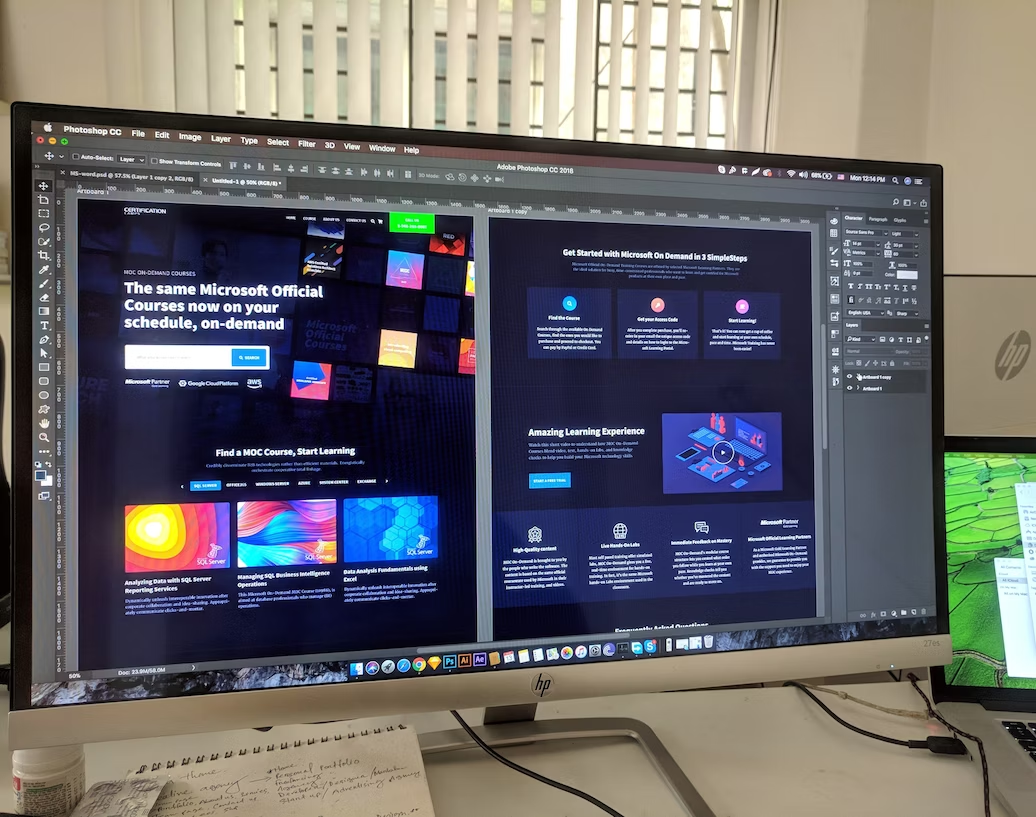Tech
10 Key Principles for Effective Website Design

In today’s digital landscape, a corporate website serves as the online gateway to a business, offering the first impression to potential clients and customers. As the cornerstone of your online presence, a well-designed corporate website is essential for establishing trust, promoting brand identity, and driving meaningful interactions. To ensure your website maximizes its impact and delivers results, it’s crucial to adhere to the ten key principles of effective website design. In this article, we will explore these principles and their significance in creating a seamless user experience that aligns with your business objectives.
-
User-Centric Design
At the heart of an effective corporate website lies a user-centric design approach. Understanding your target audience’s needs, preferences, and pain points is crucial in creating an intuitive and engaging user experience. Conduct thorough user research to gather insights, and use these findings to inform your website’s structure, content, and design elements. By prioritizing user satisfaction and accessibility, you can create a website that resonates with your audience and encourages them to explore further.
-
Clear and Purposeful Navigation
A user-friendly navigation system is the backbone of any successful website. Ensure that your corporate website design incorporates a clear and intuitive navigation menu, allowing visitors to find information quickly and effortlessly. Implement a logical hierarchy of pages and use descriptive labels for navigation links to enhance user understanding. Easy navigation not only helps visitors find what they seek but also influences their overall perception of your brand’s professionalism.
-
Mobile Responsiveness
With mobile internet usage surpassing desktop traffic, a responsive design is no longer a luxury but a necessity. Your corporate website must adapt seamlessly to various screen sizes and devices to provide an optimal user experience to all visitors. A mobile-friendly website not only pleases users but also boosts your search engine rankings, as search engines like Google prioritize mobile-first indexing.
-
Consistent Branding
Maintaining consistent branding throughout your corporate website is crucial in reinforcing brand identity and fostering recognition. Use a cohesive color scheme, typography, and imagery that aligns with your company’s visual guidelines. Incorporate your logo prominently, ensuring it appears on every page. Consistency across your website establishes a sense of professionalism and trust in your brand.
-
Compelling Call-to-Action (CTA)
An effective website design integrates strategic calls-to-action throughout the pages to guide users towards desired actions. Whether it’s to make a purchase, subscribe to a newsletter, or schedule a consultation, well-crafted CTAs lead visitors through their journey on your website, converting them into leads or customers. Use action-oriented language and place CTAs where they are easily noticeable.
-
Fast Loading Speeds
In the digital age, speed matters. Slow loading times can lead to higher bounce rates and lower user engagement. Optimize your web design for faster loading speeds by compressing images, leveraging browser caching, and minimizing HTTP requests. A faster website not only improves the user experience but also contributes to higher search engine rankings.
-
Engaging and High-Quality Content
Compelling content is the backbone of an effective corporate website. Engage your audience with well-crafted, informative, and relevant content that showcases your expertise and offerings. Utilize website design elements that enhance readability, such as bullet points, headings, and multimedia. Valuable content not only keeps visitors on your website for longer but also improves your search engine visibility.
-
Incorporating Multimedia Elements
To captivate and retain visitors’ attention, integrate multimedia elements such as images, videos, and infographics into your web design. Visual content not only communicates information effectively but also adds an element of interactivity. However, ensure that multimedia elements are optimized for fast loading and do not overshadow the core message.
-
Testimonials and Social Proof
Building trust with potential clients is essential in corporate website design. Showcase customer testimonials, case studies, and positive reviews to demonstrate your company’s reliability and success. Additionally, display social media buttons to encourage visitors to connect and engage with your brand on various platforms. Social proof goes a long way in establishing credibility and increasing conversions.
-
Analytics and Iterative Improvement
Effective web design doesn’t end with the launch. Utilize web analytics tools to gather data on user behavior and website performance. Analyze the data regularly and identify areas that need improvement. A/B testing can help you experiment with different design elements to optimize conversions continuously. A data-driven approach ensures your corporate website remains relevant and effective in a dynamic online landscape.
Conclusion
A well-designed corporate website is a powerful tool for any business seeking to make a lasting impact on its audience. By implementing the ten key principles of effective website design – user-centricity, clear navigation, mobile responsiveness, consistent branding, compelling CTAs, fast loading speeds, engaging content, multimedia integration, social proof, and iterative improvement – your corporate website will be poised for success. Remember, website design is an ongoing process; embrace data-driven insights and stay attuned to emerging trends to maintain a competitive edge in the digital realm.
-
Blog1 year ago
MyCSULB: Login to CSULB Student and Employee Portal – MyCSULB 2023
-
Android App3 years ago
Cqatest App What is It
-
Android1 year ago
What Is content://com.android.browser.home/ All About in 2023? Set Up content com android browser home
-
Software2 years ago
A Guide For Better Cybersecurity & Data Protection For Your Devices
-
Latest News2 years ago
Soap2day Similar Sites And Alternatives To Watch Free Movies
-
Android2 years ago
What is OMACP And How To Remove It? Easy Guide OMACP 2022
-
Android3 years ago
What is org.codeaurora.snapcam?
-
Business2 years ago
Know Your Business (KYB) Process – Critical Component For Partnerships






















